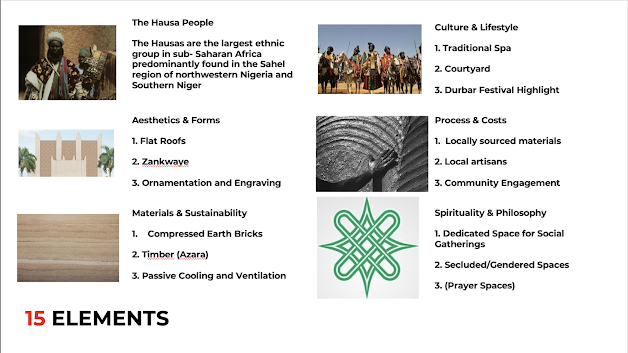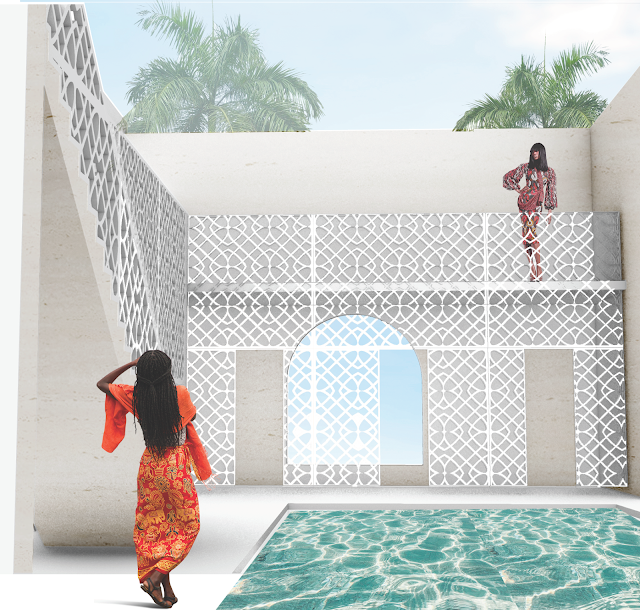The Hausa Resort and Cultural Center aims to capture the essence of Hausa culture at a glance given the visitor an immersive experience at one location.
Drawing inspiration from the layout of a typical Hausa city, and more specifically inspired by the Emir’s Palace in Kano, the resort has been laid out as a mini gated city that captures various activities that highlight Hausa culture and architecture.
Play video below to watch the design Quick Animation.
Conceptual Statement
The Gidan Hausa Resort and Cultural Center is designed to give the visitor an experience of Hausa culture from the large scale i.e. the city with its robust activities to the small scale of the home with its intimacy and privacy.
Play video below to watch the full design Presentation.
Illustration of the main entrance
Illustration of a villa entrance
View from within a courtyard in a private villa












Comments
Post a Comment
Disclaimer: Your opinions expressed in this comment section are of yours alone and not of CPDI Africa.